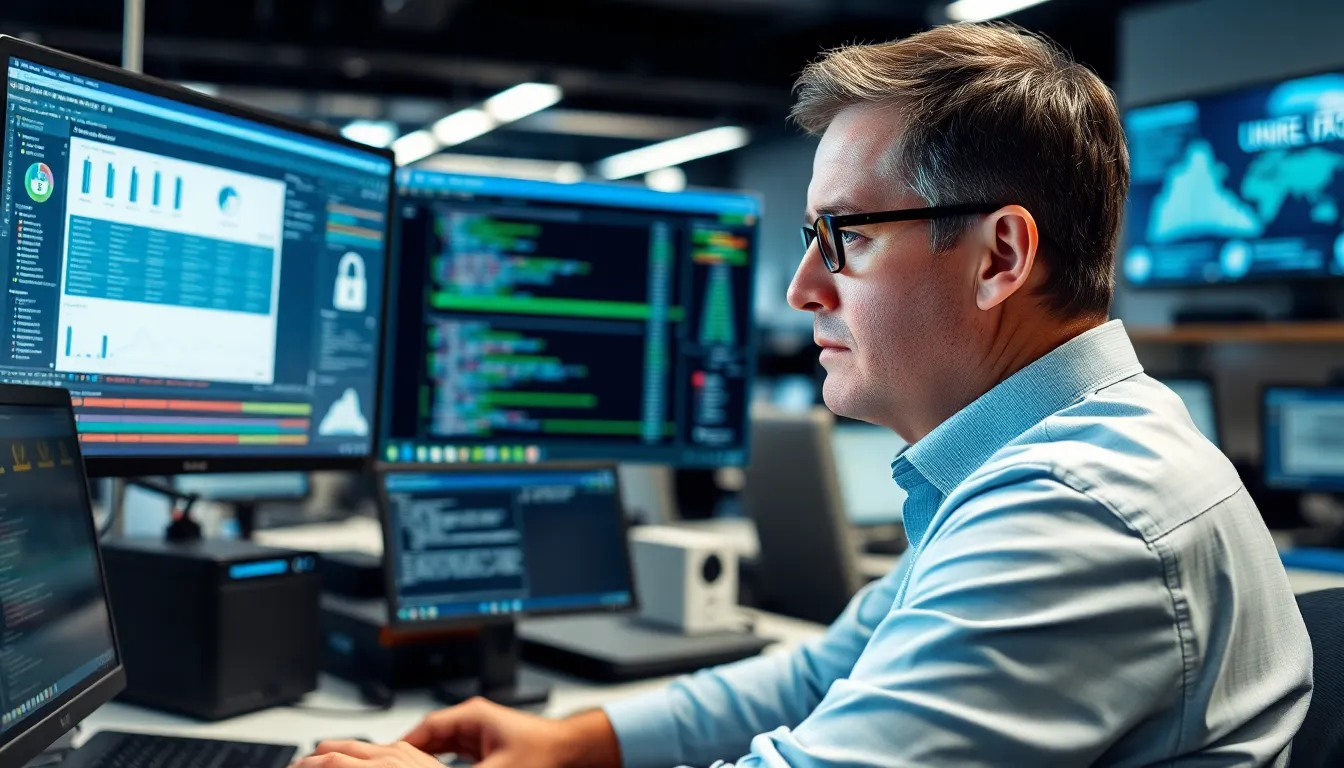Table of Contents
ToggleIn a world where cyber threats lurk around every digital corner, protecting software like Endbugflow isn’t just smart—it’s essential. Imagine your software as a high-tech fortress, complete with moats, drawbridges, and maybe even a dragon or two. Without proper protection, it’s like leaving the gates wide open for cyber marauders to waltz right in and wreak havoc.
Overview of Endbugflow Software
Endbugflow software serves as a powerful tool for managing and optimizing debugging processes. It enhances developers’ efficiency by streamlining workflows, making it easier to track and fix issues in real-time. Capable of integrating with various development environments, Endbugflow promotes seamless collaboration among teams.
The software features intuitive dashboards that provide visibility into the debugging process. Metrics and analytics displayed on these dashboards allow users to identify bottlenecks and prioritize tasks effectively. For instance, visual representations of error rates and resolution times guide teams to focus their efforts on critical areas.
Endbugflow’s automation capabilities significantly reduce the time spent on repetitive debugging tasks. Automated alerts notify developers of emerging issues, enabling prompt responses before they escalate. Its customization options also allow teams to tailor functionalities according to their specific needs.
Security is a top priority for Endbugflow. The software employs advanced encryption methods to protect sensitive data during transmission and storage. Access controls ensure that only authorized personnel can view or modify critical components of the software.
Integration with version control systems adds an additional layer of security and organization. Changes can be tracked efficiently, ensuring accountability among team members. Endbugflow encourages best practices in software development, promoting a culture of code quality and continuous improvement.
Overall, the combination of powerful features and a strong security framework positions Endbugflow as a valuable asset for organizations aiming to enhance their software debugging processes.
Importance of Protection

Protecting software like Endbugflow is vital in today’s digital environment. Strong defenses ensure the software’s integrity and its ability to provide value to users.
Risks and Threats
Cyber threats continually evolve, targeting vulnerabilities in software systems. Malicious actors exploit these vulnerabilities to gain unauthorized access or disrupt operations. Data breaches can result in sensitive information being compromised. Moreover, ransomware attacks can hold vital data hostage, jeopardizing ongoing projects. Endbugflow’s integration with various environments creates additional points of entry, emphasizing the need for rigorous security protocols. Developers must remain vigilant, updating their systems regularly to counteract these risks effectively.
Consequences of Unprotected Software
The repercussions of unprotected software can be severe and long-lasting. Data breaches can lead to financial losses, with organizations potentially facing penalties and compliance issues. Reputation damage follows close behind, as clients may lose trust in a company that experiences a security incident. Additionally, the loss of sensitive intellectual property can cripple competitiveness in the market. Organizations relying on Endbugflow might encounter delayed projects and increased operational costs due to compromised security. Addressing these vulnerabilities upfront creates a path toward maintaining trust and ensuring smooth operations.
Strategies for Protecting Endbugflow Software
Protecting Endbugflow software involves implementing robust strategies. Each method contributes to securing the software against potential threats effectively.
Regular Updates and Patches
Keeping Endbugflow software updated remains crucial. Regular updates enhance security by addressing vulnerabilities found in previous versions. Patches release quickly after identifying security flaws, minimizing the window of opportunity for potential attackers. Developers must adopt a routine schedule to ensure the software remains fortified. Integrating an automatic update feature simplifies this process, enabling seamless implementation without manual intervention.
Implementing Security Protocols
Establishing stringent security protocols is vital for Endbugflow’s integrity. Utilizing encryption technology protects sensitive data from unauthorized access. Implementing secure coding practices reduces the risk of introducing vulnerabilities during development. Regular security audits help identify weaknesses and reinforce defenses. Training team members on cybersecurity awareness cultivates a knowledgeable workforce, enhancing the overall security posture of the organization.
User Access Control
Implementing user access controls ensures that only authorized personnel can access critical components. Role-based access management limits permissions according to individual responsibilities. Regularly reviewing access rights helps to eliminate unnecessary permissions, reducing the risk of insider threats. Utilizing multi-factor authentication enhances security further, adding an extra layer for users attempting to log in. Monitoring user activity creates a trail, aiding in the identification and response to suspicious behavior.
Best Practices for Software Security
Ensuring the security of Endbugflow software requires attention to various best practices. Fostering a security-conscious environment significantly enhances the defense against cyber threats.
Employee Training and Awareness
Regular employee training improves cybersecurity understanding. Sessions on identifying phishing attempts and social engineering tactics reduce vulnerabilities. Awareness programs should promote a culture of vigilance, encouraging team members to report unusual activities. Interactive workshops that simulate threat scenarios can deepen engagement. Additionally, frequent updates on security policies keep staff informed about current threats and defenses. Organizations benefit by empowering employees to be the first line of defense against cyber attacks.
Using Encryption Techniques
Employing encryption techniques safeguards sensitive data throughout its lifecycle. Data at rest and in transit must utilize strong encryption protocols to prevent unauthorized access. Implementing end-to-end encryption ensures that information remains secure from the moment it is created until it is accessed by authorized users. Organizations can mitigate risks further by adopting industry-standard encryption algorithms, such as AES-256. Regular audits of encryption practices will verify their effectiveness and compliance with security regulations. Encrypting databases and communications reduces the likelihood of data breaches, fostering confidence in Endbugflow software.
Protecting Endbugflow software is vital for organizations aiming to secure their debugging processes. By implementing robust security measures and fostering a culture of cybersecurity awareness, teams can significantly reduce their vulnerability to threats. Regular updates and stringent access controls are essential in maintaining strong defenses against potential breaches.
Moreover, ongoing training and awareness programs empower employees to recognize and respond to cyber threats effectively. With a comprehensive approach to security, organizations can leverage the full potential of Endbugflow while ensuring their data remains safe and secure. This proactive stance not only enhances operational efficiency but also builds trust with clients and stakeholders.





